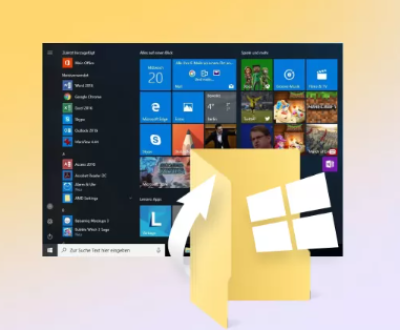Restoring deleted data from a hard disk is a process that requires both patience and the right set of tools and knowledge. When files are deleted from a hard drive, they are not immediately removed from the disk. Instead, the space that the file occupied is marked as available for new data to be written over it. As long as new data hasn’t overwritten the deleted files, it is often possible to restore them.
1. Restoring deleted data from a hard disk
Losing important files from your hard drive can be a distressing experience, especially when you think they are gone forever. Whether the data was deleted accidentally, due to a system crash, or a hard drive failure, the good news is that deleted data may not be entirely lost. If you act quickly, there’s a good chance you can restore your files and recover valuable information.
In this guide, we will walk you through the process of restoring deleted data from a hard disk, discussing methods ranging from simple recovery techniques to using professional data recovery services.

2. Data Deletion
When you delete a file on your hard drive, it’s not actually erased immediately. Instead, the file system marks the space occupied by that file as available, allowing new data to be written over it. Until that space is overwritten, the deleted data remains on the hard disk and can potentially be recovered.
There are different ways data can be deleted:
Logical Deletion: This happens when a file is deleted through the operating system (e.g., using the Recycle Bin or a file manager). The data is still present on the disk, but the file pointer is removed, and the space is marked as available for use.
Physical Deletion: This occurs when data is overwritten or the hard disk is physically damaged. Once the file has been overwritten or the disk has suffered physical damage, recovery becomes much more difficult.
3. Factors Affecting Data Recovery
Several factors can influence the success of data recovery:
Amount of Time Since Deletion: The sooner you attempt to recover deleted files, the higher the chance of success. Over time, new data may overwrite the deleted files, making recovery more challenging.
Drive Activity After Deletion: If you continue to use the hard drive after data deletion, there’s a greater chance of overwriting the deleted data. It’s essential to stop using the hard drive as soon as you realize that files have been deleted.
Type of File System: Different file systems (e.g., NTFS, FAT32. exFAT) have varying methods for managing file deletions. Recovery may differ depending on the file system used.
Drive Condition: If the hard disk is physically damaged, the chances of recovery decrease significantly. In some cases, hardware failure may require professional intervention.
4. How to Prevent Data Loss
While it’s important to know how to recover deleted files, preventing data loss is the best approach. Here are some strategies to reduce the likelihood of losing critical data:
Regular Backups: Make it a habit to back up your important files regularly. Use external drives, cloud storage, or automated backup solutions.
Create System Restore Points: On Windows, setting up restore points can help revert the system to an earlier state in case of a failure or unwanted changes.
Use File Versioning: Some software (like cloud storage services and certain office applications) allows you to keep previous versions of your files, making it easier to recover older versions if needed.
Avoid Physical Damage: Protect your hard drive from physical shocks, moisture, and overheating to minimize the risk of hardware failure.
5. Step-by-Step Data Recovery Process
If data is deleted from your hard drive, follow these steps to increase the chances of successful recovery:
Step 1: Stop Using the Hard Drive
As soon as you realize that files have been deleted, stop using the drive. This will prevent new data from being written over the deleted files.
Step 2: Check the Recycle Bin (Windows) or Trash (Mac)
For files that were recently deleted, check the Recycle Bin (Windows) or Trash (Mac) first. If the files are there, simply restore them.
Step 3: Use Data Recovery Software
Panda Assistant is not just another data recovery tool it’s your digital hero, swooping in when the worst happens! Whether it’s an accidental file deletion, a sudden system crash, or a corrupted storage device, Panda Assistant is here to rescue your valuable data like a tech superhero, bringing lost files back from the digital abyss. Picture this: Your most important documents, cherished photos, or priceless memories vanishing with a single click, but then, in a moment of sheer brilliance, Panda Assistant appears, restoring them as if by magic.
Designed for both tech novices and experts, this tool effortlessly blends cutting-edge recovery technology with an intuitive, user-friendly interface. No complicated jargon, no steep learning curve just the powerful, reliable performance you need to restore what matters most. From external hard drives to SD cards and USB devices, Panda Assistant supports a wide range of storage media, ensuring that no file, regardless of its origin, is beyond saving.
Step 4: Scan for Lost Data
Install the data recovery software on a different drive (if possible) to avoid overwriting the data you’re trying to recover. Then, launch the software and select the drive that contains the deleted files. Choose the type of scan (quick or deep) and start the recovery process.
Quick Scan: A faster scan that looks for recently deleted files.
Deep Scan: A more thorough scan that looks for files that might have been deleted longer ago or overwritten.
Step 5: Preview and Recover Files
Once the scan is complete, the software will display a list of recoverable files. Preview the files to ensure they are the ones you want to recover. Select the files and save them to a different drive or partition to prevent overwriting.
Step 6: Check for File Integrity
After recovery, check the integrity of the recovered files. Sometimes, files may be partially corrupted during the recovery process, especially if they were overwritten or damaged. In such cases, specialized software may be required to repair them.
6. Using Data Recovery Software
Data recovery software works by scanning the hard disk for traces of deleted files and attempting to recover them. Most recovery software tools offer both basic and advanced features, so selecting the right tool for your needs is essential. Some software tools come with free trials, while others offer a full set of features for a one-time fee or subscription.
Key Features to Look For:
File Type Support: Ensure the software supports the file types you’re trying to recover.
Preview Functionality: Some tools allow you to preview files before recovery, making it easier to find the right ones.
Deep Scan Option: This feature allows the software to find files that are harder to recover, such as those lost due to disk corruption.
File Repair: Some recovery tools come with the ability to repair damaged files after recovery.
7. When to Seek Professional Help
In some cases, attempting to recover data yourself can cause further damage to the hard drive or make recovery more difficult. If the following situations apply, you may need to seek professional data recovery services:
Physical Damage: If your hard disk has suffered physical damage (e.g., clicking sounds, overheating, or exposure to water), it’s better to consult a professional rather than attempt DIY recovery.
Important Data: If the data you’re trying to recover is highly valuable or irreplaceable, professionals have the right tools to ensure the best possible recovery.
Advanced Recovery Needs: In situations where standard recovery tools don’t work, professionals can use advanced techniques like using clean rooms for opening the hard disk, hardware-assisted recovery, and specialized software.
About us and this blog
Panda Assistant is built on the latest data recovery algorithms, ensuring that no file is too damaged, too lost, or too corrupted to be recovered.
Request a free quote
We believe that data recovery shouldn’t be a daunting task. That’s why we’ve designed Panda Assistant to be as easy to use as it is powerful. With a few clicks, you can initiate a scan, preview recoverable files, and restore your data all within a matter of minutes.
Subscribe to our newsletter!
More from our blog
See all postsRecent Posts
- How to restore deleted images 2025-06-30
- How to restore a deleted file on windows 2025-06-30
- is there any way to restore deleted photos 2025-06-30

 Try lt Free
Try lt Free Recovery success rate of up to
Recovery success rate of up to









